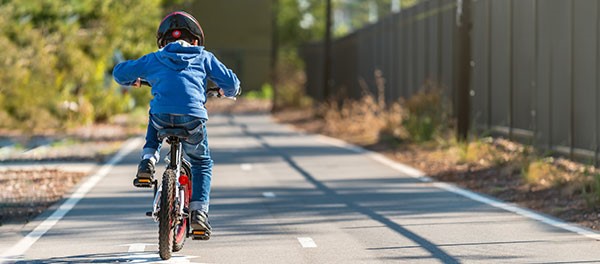There was no way Sebastian was getting on his bike. The six-year old camper had literally dug his heels into the dirt and was shaking his head frantically from side to side. He had decided bike riding was not a fun thing to learn. He went from defiant to sobbing in the blink of an eye. His motivation to try something new had dissolved and his mind had been made up – this was not happening.
As I dropped off my teenager for her summer camp job, I witnessed Sebastian’s struggle firsthand. Introducing a new skill to a child can be exhilarating or exasperating – often it’s a mix of both. Parents often find themselves in the instructor role as they navigate through the many stages of childhood development. So what to do when a child shows little interest in trying something new?
A common technique is a reward system. Motivating children with external validation has always been a popular go-to for parents and instructors – think sticker charts and popcorn parties. There’s a good reason for this – it works! From potty training to completing homework, rewards and praise can be effective ways to get children to focus and stay committed to a task.

But experts like Alfie Kohn feel parents are going too far. He argues there’s a risk we’re raising a generation of praise junkies. Other experts have chimed in saying the goal should be to encourage children to tap into their intrinsic desire to try something new because that’s how learning works. It’s faster to offer children praise and rewards but nurturing an interest to simply “give it a go and see what happens” is said to be more beneficial in the long run.
There’s no doubt, when kids feel successful and capable, they want to do more. The challenge is to get them to start in the first place and push through when the going gets tough. So what if you’re looking to skip the sticker chart and reign in the praise? Here are four suggestions by Richard Lovie, the author of the Motivation Breakthrough:
- Show Encouragement: There’s nothing like a “you got this” to start the ball rolling. The child may profoundly disagree but setting a confident tone can do wonders. You may want to make it clear “we’re all going to try this bike riding thing” but adding “I can see you taking off like a superhero” could inject a little fun.
- Display Interest: Asking a few simple questions can make the child feel heard. “What do you think makes the wheels go round and round?” or “What are some ways you like to go fast?” can get a conversation started.
- Offer Gratitude: It may not be intuitive to say thank you in these situations but after they make a small attempt like sitting on their bike for example, you can say “Thanks so much for making that effort. It made me feel like I’m helping you learn.”
- Express Enthusiasm: This one comes naturally to a lot of us. “Nice job!” is easy but getting more specific like “I loved the way you gave this a shot. It’s so thrilling to see you try something new.”

Offering to go for ice cream after a big victory is always on the table. It’s just keeping in mind how often we’re relying on the quick and fun rewards. Building a sense of confidence and ability is a long, slow build but there is huge pay-off in the end. Bike riding for example, is one of the best ways to stay active and enjoy being outdoors. Sebastian has a future full of exploring ahead of him. After a few sniffles, he managed to regroup and pictured himself soaring through the sky with his imaginary cape flowing behind him. He wobbled through the obstacle course with a smile a mile wide and promptly declared, “I did it, all by myself!”.

